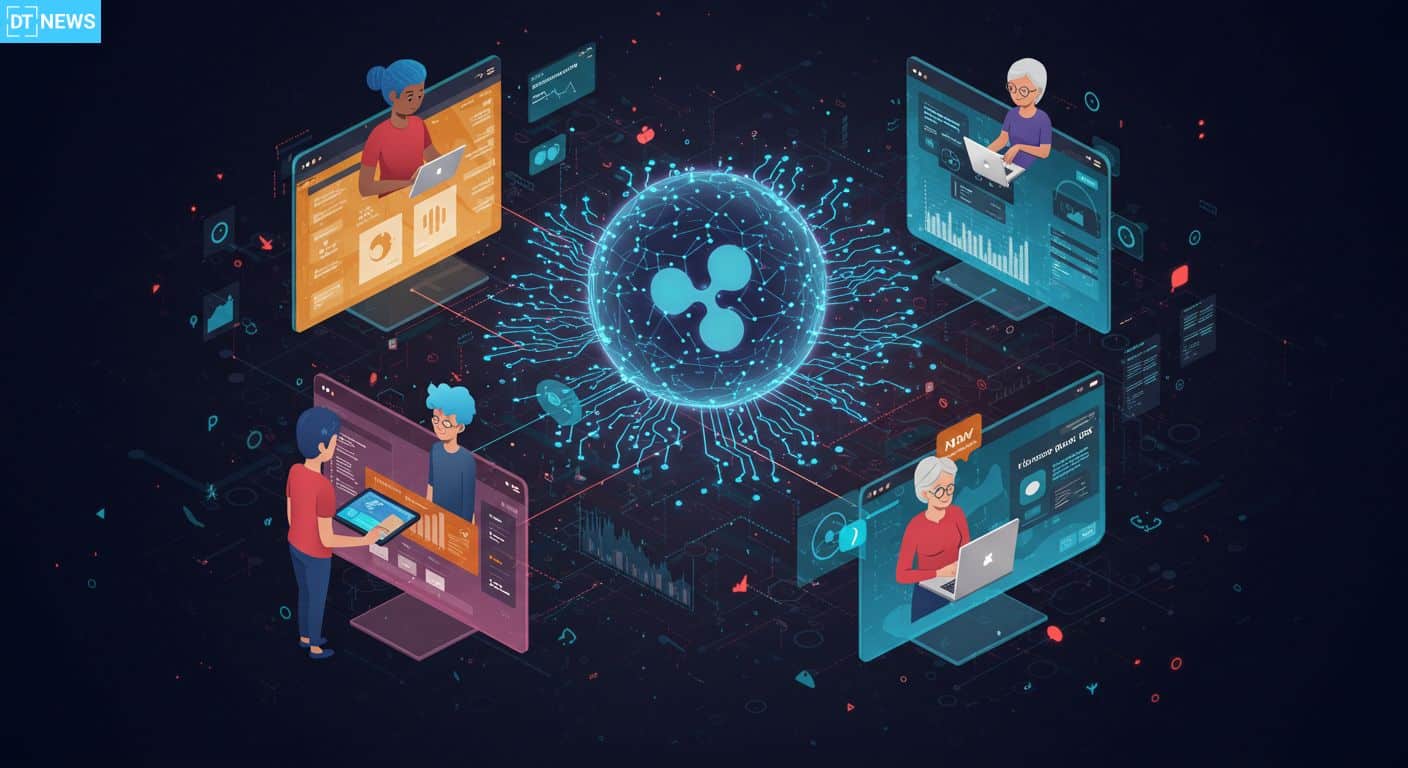The XRP Ledger has taken a step forward with the release of version 2.5.0, a core software update that shows Ripple’s commitment to the enterprise grade blockchain. This latest release brings advanced transaction functionality and developer control and is aiming to compete with other ecosystems like Ethereum and Solana.
- Batch Transactions and Token Escrow for Institutions
- Developer Tools Get a Boost with Permissioned DEX and Delegation
- On-Chain Metrics Show Increasing Adoption
- Conclusion
- FAQs
- How do batch transactions benefit enterprises?
- What does token escrow enable?
- Why is the permissioned DEX important?
- How did the market react?
- Glossary
According to RippleX developers, version 2.5.0 introduces several long awaited features including batch transactions and token escrow. These features are designed to meet institutional demand by allowing bulk token distribution, mass payments and asset locking making XRPL more attractive for enterprise and DeFi use cases.
Batch Transactions and Token Escrow for Institutions
At the heart of this new version release is support for batch transactions, a feature that allows users to bundle multiple operations into one transaction. For payment companies and blockchain based services, this reduces overhead and improves scalability. Institutions especially those focused on token distributions or payroll automation will tend to benefit the most.

Equally important is the token escrow functionality. With token escrow, smart contracts can now lock and release assets based on predefined terms enabling applications like vesting schedules for projects, secure deposits for decentralized applications and automated payouts.
RippleX engineer Mayukha Vadari said in May that 2.5.0 would “enable XRPL to directly challenge other Layer-1 ecosystems” and that the changes were “built with scale and security in mind”.
Developer Tools Get a Boost with Permissioned DEX and Delegation
Another key part of this release is the permissioned decentralized exchange (DEX) which gives participants in the ecosystem the ability to apply access controls to trading pairs. This is a rare combination of decentralization and compliance ready architecture and could be a differentiator for XRP Ledger in jurisdictions with stricter regulations.
Along with the DEX changes is the introduction of permission delegation which allows developers and administrators to assign specific roles and permissions across various network functions. This gives more granular control to enterprise participants and service providers.
These technical changes are accompanied by bug fixes especially for NFT trustlines and JSON-RPC responses. Developers report faster response times and improved network stability.
On-Chain Metrics Show Increasing Adoption
Along with the software update XRP’s price bounced 6% to $2.17 and recovered weekend losses. More importantly, on-chain metrics are showing deeper adoption. CryptoQuant shows exchange reserves for XRP dropped 21% from $3 billion to $2.3 billion in the last week. This means more tokens are being withdrawn from exchanges to be held long term or used in DeFi applications.
Daily active addresses on the network have increased 7x and whale wallets have hit new highs according to Santiment.
Popular validator Vet praised the upgrade via social media, calling it “a critical step forward in making XRPL faster, more efficient, and enterprise-ready.”

Not just technical, there’s institutional interest too. CME Group, Uphold and tokenization firms like Ondo Finance are keeping an eye on XRP Ledger as it adds smart contract functionality and builds out its ecosystem.
Conclusion
XRP Ledger 2.5.0 is a remarkable strategy to make XRPL a high performance, enterprise ready blockchain that can compete with Ethereum and Solana. With batch payments, token escrow and permissioned trading now live, the infrastructure is clearly maturing to support bigger use cases from institutional finance to decentralized apps.
Growing user activity, shrinking exchange reserves and increasing whale activity all point to increasing confidence in XRP’s long term prospects.
Summary
XRP Ledger’s new 2.5.0 update adds batch transactions, token escrow, permissioned DEX and permission delegation to strengthen its enterprise capabilities and scalability. These features set XRPL as a serious competitor to Ethereum and Solana. On-chain data shows a surge in active users, 21% drop in exchange reserves and increasing whale activity, all signs of growing adoption.
The token price also bounced 6% after the update. With CME Group and Ondo Finance interested, XRP Ledger might be on the verge of transitioning from niche blockchain to major institutional infrastructure.
FAQs
How do batch transactions benefit enterprises?
They allow mass token distributions and reduce the operational burden of processing multiple transactions individually.
What does token escrow enable?
Token escrow allows assets to be locked and released automatically based on specific criteria, ideal for vesting and secure payouts.
Why is the permissioned DEX important?
It allows exchanges on XRPL to operate with compliance controls for regulated environments.
How did the market react?
XRP price went up 6%, on-chain data shows increased activity and 21% drop in exchange reserves.
Glossary
Batch Transactions: Multiple operations in one transaction.
Token Escrow: Smart contract that locks tokens until conditions are met.
Permissioned DEX: Decentralized exchange with controls.
Delegation: Assigning roles or permissions in a blockchain.
RPC (Remote Procedure Call): Protocol XRPL uses to talk to nodes.



















































































































